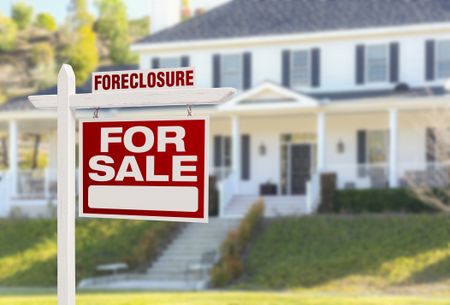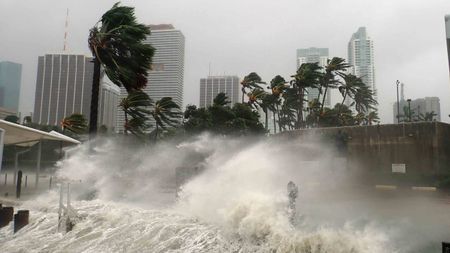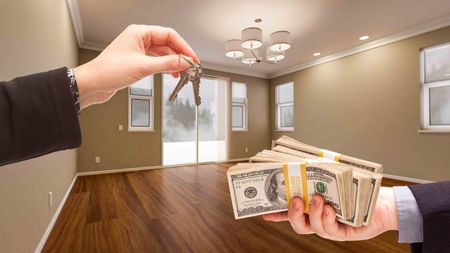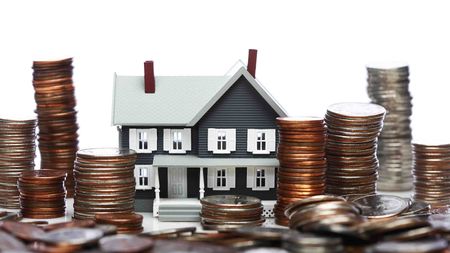The Fragile State of Home Prices
A bottom is in sight, but the sputtering economy could delay the rebound.

Home prices around the U.S. are still falling. But in a sign that the worst may soon be over, sales of homes are ticking up in many areas. The question is, will the housing recovery be derailed by tight credit and the struggling economy?
SEE SLIDE SHOW: Safe Havens in Real Estate Values
| Row 0 - Cell 0 | Home Prices at a Glance |
| Row 1 - Cell 0 | TOOL: See Prices in Your Area |
| Row 2 - Cell 0 | TOOL: How Much House Can I Afford? |
| Row 3 - Cell 0 | See Home Loan Rates in Your Area |
A slight rise in sales of existing single-family homes last fall was driven largely by big increases in sales in California, Florida, Arizona and Nevada -- the states most afflicted by the housing bust. Sales have also risen in Minnesota, Rhode Island and northern Virginia. Plus, the number of homes on the market declined for the first time since March 2005.

Sign up for Kiplinger’s Free E-Newsletters
Profit and prosper with the best of expert advice on investing, taxes, retirement, personal finance and more - straight to your e-mail.
Profit and prosper with the best of expert advice - straight to your e-mail.
Historically, home prices begin to rise within nine to 12 months of a sales uptick. But sales in September (the latest data available) reflect contracts negotiated in June and July, when the economic climate wasn't so dire. Numbers reflecting later fall sales could nip the trend in the bud.
Maybe it's poetic justice that the financial crisis that's wreaking havoc on the housing market is rooted in the housing boom.
A Deeper Downturn
Sales aside, prices continued to fall throughout 2008, with the bottom shimmering out of reach like a mirage in the desert. The National Association of Realtors, which tracks sales throughout the U.S., expects the national median home price for existing single-family homes to decline by 8% in 2008, on top of a 1.8% drop in 2007. That would be only the second time since the NAR began keeping records in 1968 that prices fell two years in a row. Our data supplier, Fiserv Lending Solutions, tracks 110 metro areas, where price changes have been even more volatile. Fiserv predicts a more dramatic decline of 15% in home prices for 2008 on top of 2007's 9% drop.
For the year that ended June 30, 2008, prices rose in only five of the 100 biggest U.S. markets tracked by Fiserv: Albuquerque; Burlington, Vt.; Clarksville, Tenn.; Lancaster, Pa.; and Pittsburgh. But the increases are just a blip, with Lancaster's 1.6% being the biggest of the bunch. See prices in 381 cities.
During the past five years, only one-fifth of the 100 biggest markets saw annualized price gains exceeding the historical average of 6.4%. Prices in the bottom fifth -- metro areas representing the leading edge of the downturn, mostly in the industrial Midwest and inland California -- failed to grow or fell by up to 5% annually.
In many smaller cities that missed the speculative bubble, prices plodded along at average or below-average rates and never exceeded the limits of local affordability. And they avoided the subprime binge that brought on the foreclosure mess. By the end of 2008, however, even their price gains had slowed. In Texas, where the market had been pumped up by affordability and population and job growth, prices will be flat in 2009, says Jim Gaines, of the Texas Real Estate Center at Texas A&M University. (Our table of home prices omits Texas because it's a "nondisclosure" state; our data provider, Fiserv, can't get the information it needs to track prices.)
Motivation for BuyersDelinquencies and foreclosures rose throughout '08 to the highest levels ever. The NAR reports that 35% to 40% of sales in September were "distressed" properties. And the pain isn't over yet. Interest-rate resets of subprime mortgages peaked in 2008, but resets of many adjustable-rate mortgages made to above-sub but less-than-prime borrowers won't peak until 2011. Mark Zandi, of Moody's Economy.com, says that job losses and cutbacks will tip homeowners who are underwater -- some 12 million currently -- into foreclosure.
Still, says Edward Leamer, of the UCLA Anderson Forecast, the low prices on foreclosures and short sales (when the lender agrees to accept less money than the mortgage amount) are a vital part of the "price-discovery process"; they create a sense of urgency among fence-sitting buyers who are waiting for the bottom. Without that motivation, buyers are loath to commit. The average discount from market value for properties in all stages of foreclosure stands at about 30% nationwide, according to Realty-Trac, an online marketplace for foreclosed properties.
To head off more foreclosures at the pass, banks such as Citi, JPMorgan Chase and Bank of America have announced they will reach out to troubled borrowers to modify the terms of their mortgages. In mid November, the Federal Housing Finance Agency, which oversees Fannie Mae and Freddie Mac, announced a program to help borrowers at risk of foreclosure. The goal: Modify loan terms so that the monthly mortgage payment consumes no more than 38% of a household's monthly pretax income. The plan is certain to stir up controversy and could interrupt the natural, albeit painful, process of reaching rock bottom.
Falling prices have also made homes more affordable for first-time buyers. Between mid 2007 and mid 2008, the national median home price fell a notch, from four times the median family income to three times, and the median mortgage payment (with an interest rate of 6.5%) fell from 23% to 20% of pretax income. In September, about 15% of the buyers who had dived in were investors, according to the NAR. But they're not the dilettantes of the boom years. Investors now must use more of their own money, buying outright with cash or making a large down payment to get financing.
[page break]
Pain and Gain in Cape Coral
Bargains lured buyers, like fish to chum, back to Cape Coral and nearby Fort Myers, Fla., this past summer, illustrating the price-discovery process. In July, this locale led the nation in foreclosures, according to RealtyTrac. By September, it led the state in year-over-year increases in sales, with a 128% rise.
| Row 0 - Cell 0 | Home Prices at a Glance |
| Row 1 - Cell 0 | TOOL: See Prices in Your Area |
| Row 2 - Cell 0 | TOOL: How Much House Can I Afford? |
| Row 3 - Cell 0 | See Home Loan Rates in Your Area |
In 2003 and 2004, speculators, hopped up on easy financing and priced out of markets such as Sarasota, Naples and southeast Florida, flocked to the area. The median price for an existing single-family home peaked at $332,300 in December 2005. After speculators began to flee in late 2005, prices quickly fell again; by this past September, the median price had declined to $141,400, according to the Florida Association of Realtors. New-home construction all but dried up, and retail trade and services related to housing fell off as a result. Unemployment stands at 9% in Cape Coral -Fort Myers. More than a year's worth of home inventory sits on the market.
In Fort Myers, Mariel and Brennan Courtwright experienced the downturn firsthand. In the summer of 2005, Mariel, 26, sold her condo in Cape Coral to Brennan, 27, and bought a new two-bedroom townhouse on the outskirts of town for $150,000. By fall, she and Brennan were married. They decided to live in the condo, which was closer to their jobs. Rather than sell the townhouse, they rented it out, but the rent was about $500 shy of the mortgage payment and other home-related expenses each month, and the couple watched as home prices fell.
In mid 2007, tired of pouring money "down a black hole," they listed the townhouse for sale at $165,000 with Coldwell Banker agent Denny Sharma. With no takers, they reduced the price a few times over the next several months, by $5,000 each time. Finally, they dropped the price to $139,900, making it the lowest-priced unit of its model in their development. It quickly sold for $133,700. Mariel says if they had sold in 2005, they could have gotten $200,000. They continue to live in the condo, which is worth about $30,000 less than they owe on the mortgage.
Meanwhile, buyers in the area are snagging deals. In July, Bernie Reid, 60, and Beverly McNair, 65, bought a short sale in Cape Coral that had been on the market since 2007. Agent Diane Fowler, of Sellstate Priority Realty, guided them through the negotiations with the California owner and his bank. The couple got the nearly new three-bedroom home for about half of what they would have paid three years earlier. Reid quickly sold his home in Clayton, N.C., 30 miles from Raleigh, a relatively unscathed market. The buyer paid $127,500 -- $2,000 less than list price -- and Reid figures that after paying his agent's sales commission and throwing in a few thousand dollars toward the buyer's closing costs, he'll be out only about $6,000 for his new home.
What's Next
When asked to describe the trend for home prices for the year ahead, Fiserv's chief economist, David Stiff, has a simple reply: down. He says the ongoing crisis in the credit markets has already delayed the recovery, and credit-tightening and the disappearance of the private mortgage markets have cut demand. While the 30-year fixed rate for a mortgage remains historically low, it may not be much help to buyers who can barely afford a home. Adjustable-rate mortgages don't offer much of an advantage, and the Libor index, to which many ARMs are linked, has been volatile.
Worst case: With the country in recession and laid low by irrational pessimism, we could enter a new downward spiral. In this scenario, says Stiff, declining family incomes and job losses undercut gains in affordability, further deflating consumer confidence. Foreclosures increase. Prices fall further and push more borrowers (who have negative equity and can't refinance) into foreclosure. That feeds back into the credit market, as banks have to take larger write-downs and sell assets to remain solvent.Officially, Fiserv forecasts that the median home price nationally will fall another 9% in 2009, bottoming out in the last half of '09, and increase nearly 7% in 2010 -- a prognosis built on increased affordability. But Kiplinger's prediction is less rosy.
Joblessness in 2009 will likely drag down any lifelines thrown by the government to slow home-price declines, so we expect home prices to fall another 10% and don't think the market will regain its footing until 2011.
Which cities will do best? Stiff cites Boston and Denver, which bottomed early and will recover sooner. When recovery begins, Zandi says, California will be the first to come back. He observes that much of coastal California may already be undervalued, based on affordability, while the Central Valley is still significantly overvalued. In some markets, however, the recovery will be much slower than for the U.S. as a whole. During the home-price downturn in 1990Ð91, prices remained flat in some metro areas, including Boston and Los Angeles, for five to seven years.
Lawrence Yun, chief economist for the NAR, anticipates that some of the southern states -- Mississippi, Alabama, Georgia, Tennessee and the Carolinas -- will see very slow price growth of 2% to 3% throughout 2009. "With no price booms and healthier job markets compared with the rest of the country, they're just acting as if things are normal," says Yun.
On the other end of the spectrum, Fiserv forecasts that over the next year, the median home price in Las Vegas will tank by a jaw-dropping 43%, the biggest dip among the 100 largest cities it tracks, followed by Naples, Fla.; VisaliaÐPorterfield, Cal.; Miami; and BradentonÐSarasota, Fla. Homes in all of these locales will lose about another third of their value.
Newly built homes and condos show no signs of recovery just yet. In September, sales of new homes fell by a third from the year before; the median price fell by 9%, to $218,400; and the supply stood at 10.4 months' worth, according to the Department of Commerce. It will take a couple of years to sell off the excess inventory. Meanwhile, construction has collapsed and Zandi thinks it will reach a postÐWorld War II low by the spring of 2009.
Sales of condos fell by 16%, the median price fell by 10% to $199,400, and there was a hefty 14.3-month supply, according to the National Association of Realtors. The most-challenged condo markets include south Florida, Las Vegas and Santa Barbara, Cal., according to Fiserv. In Deerfield Beach, Fla., some lenders now keep internal blacklists of condo projects for which they won't lend, says real estate market analyst Jack McCabe; others have begun to require buyers to put down 30% or even 40%.
Despite all the pessimism, there is one bright spot. Just as housing led the downturn, it will probably recover before other sectors of the economy. Says Stiff: "First in, first out."
SEE SLIDE SHOW: Safe Havens in Real Estate Values
Get Kiplinger Today newsletter — free
Profit and prosper with the best of Kiplinger's advice on investing, taxes, retirement, personal finance and much more. Delivered daily. Enter your email in the box and click Sign Me Up.

-
 Stock Market Today: Stocks Are Mixed Before Liberation Day
Stock Market Today: Stocks Are Mixed Before Liberation DayMarkets look forward to what comes with the reordering of 80-year-old global trade relationships.
By David Dittman Published
-
 Stagflation: What It Is and Why Retirees Should Care
Stagflation: What It Is and Why Retirees Should CareStagflation — the economic bogeyman of the 1970's — may return to the US. Here's what it could mean to your retirement.
By Donna Fuscaldo Published
-
 How to Find Foreclosed Homes: Best Foreclosure Listings Sites
How to Find Foreclosed Homes: Best Foreclosure Listings SitesMaking Your Money Last Find foreclosed homes for sale on these foreclosure listing websites. Search for properties on these free, paid or government sites.
By Bob Niedt Last updated
-
 Luxury Home Prices Rise as the Rich Dodge High Mortgage Rates
Luxury Home Prices Rise as the Rich Dodge High Mortgage RatesLuxury home prices rose 9% to the highest third-quarter level on record, Redfin reports, growing nearly three times faster than non-luxury prices.
By Kathryn Pomroy Published
-
 Four Tips for Renting Out Your Home on Airbnb
Four Tips for Renting Out Your Home on Airbnbreal estate Here's what you should know before listing your home on Airbnb.
By Miriam Cross Published
-
 Five Ways to Shop for a Low Mortgage Rate
Five Ways to Shop for a Low Mortgage RateBecoming a Homeowner Mortgage rates are high this year, but you can still find an affordable loan with these tips.
By Daniel Bortz Last updated
-
 Looking to Relocate? Plan for Climate Change
Looking to Relocate? Plan for Climate Changebuying a home Extreme weather events are on the rise. If you’re moving, make sure your new home is protected from climate change disasters.
By Rivan V. Stinson Last updated
-
 Retirees, A Healthy Condo Has a Flush Reserve Fund
Retirees, A Healthy Condo Has a Flush Reserve FundSmart Buying Reserve funds for a third of homeowner and condo associations have insufficient cash, experts say. Here are some cautionary steps you should take.
By Patricia Mertz Esswein Published
-
 Cash Home Buyers: New Services Offer Help Making All-Cash Offers
Cash Home Buyers: New Services Offer Help Making All-Cash OffersBecoming a Homeowner Some firms help home buyers make all-cash offers on homes. Weigh the fees before you sign on.
By Emma Patch Published
-
 Home Sale Prices in the 50 Largest Metro Areas
Home Sale Prices in the 50 Largest Metro AreasBecoming a Homeowner What’s happening in the market where you live?
By the editors of Kiplinger's Personal Finance Published